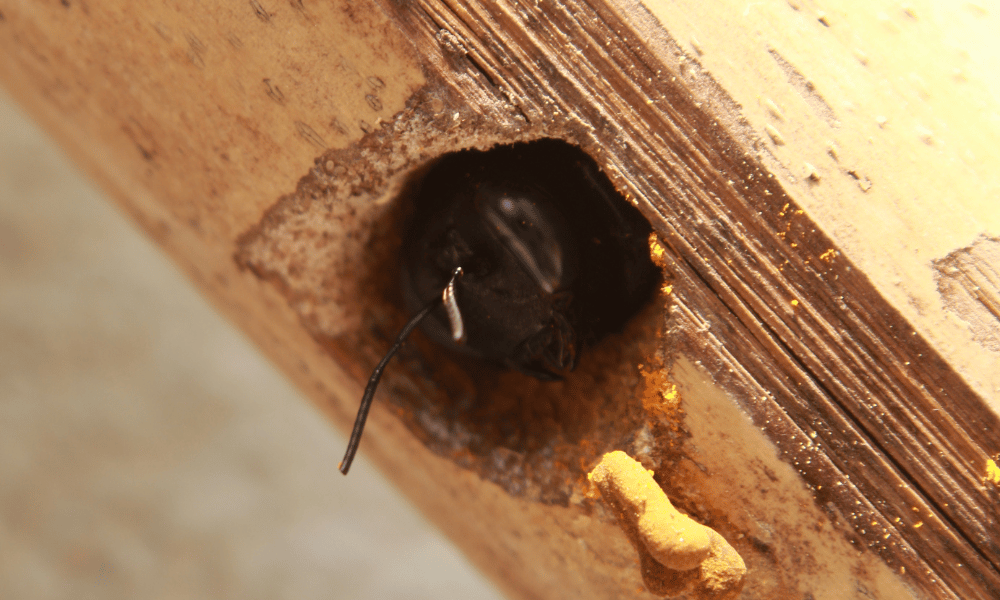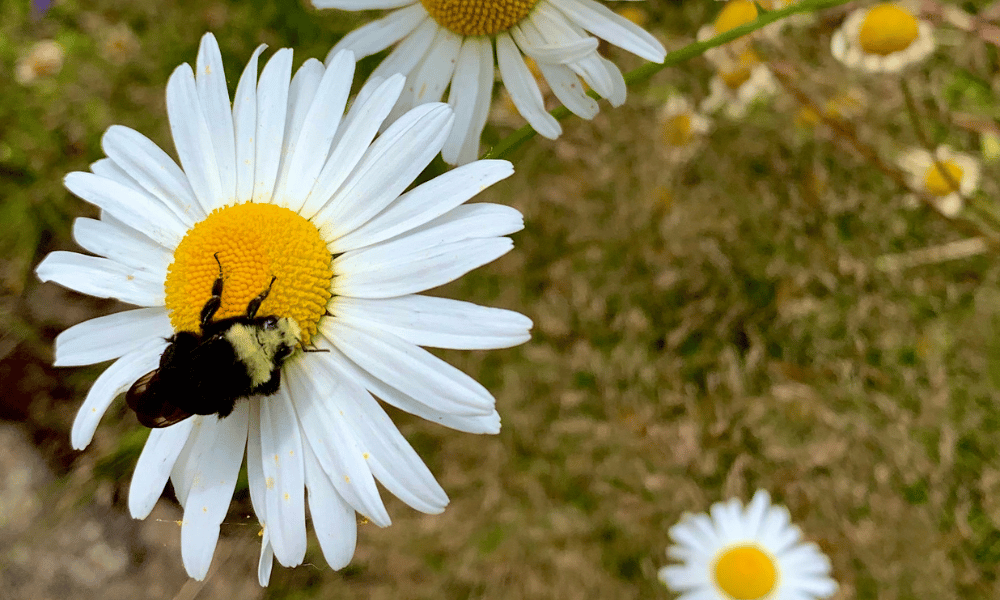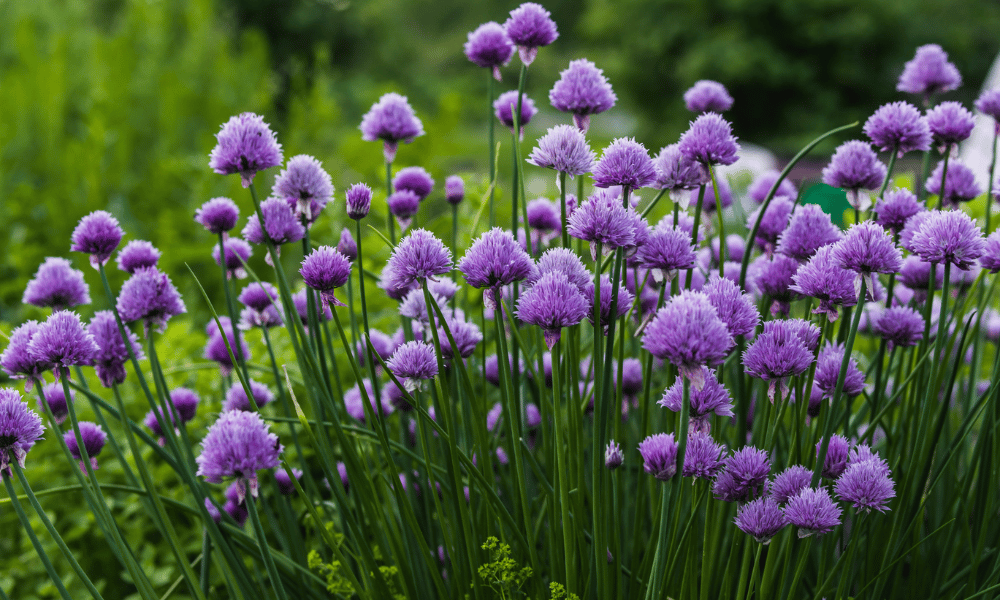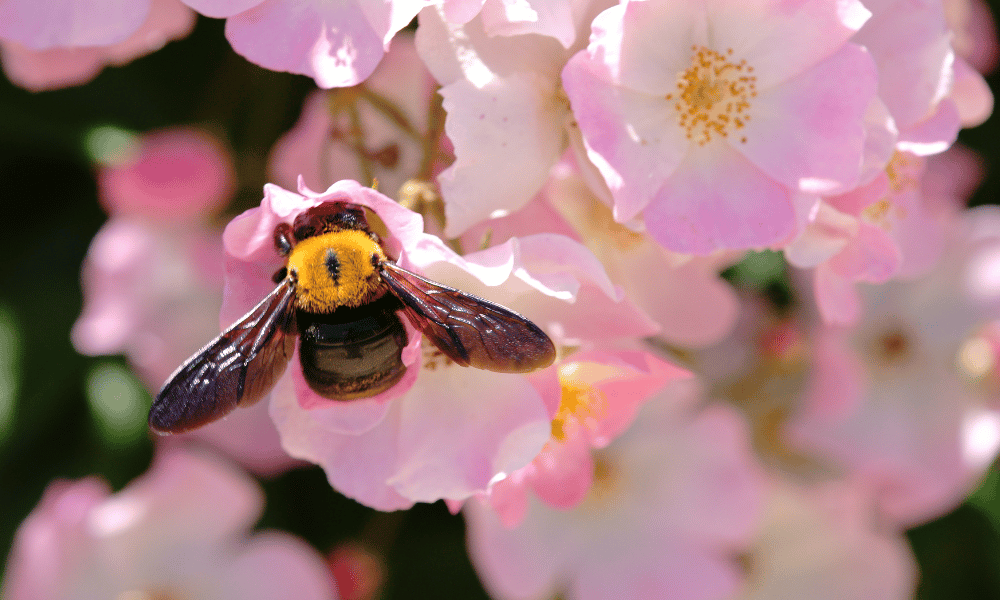You’ll be familiar with honey bees and bumblebees, and what attracts them. But, what about lesser-known species such as carpenter bees? Do you know what attracts carpenter bees to your garden?
Carpenter bees are attracted to a variety of flowers including many wild flowers, herb flowers and fruit tree flowers. As their name suggests, they are also attracted to soft woods.
Most solitary bees, like carpenter bees make their homes in holes, which could be in the ground, or inside the empty tubular stalk of a plant. Some even dig into walls, such as the masonry bee.
But there’s something very different about carpenter bees that makes them stand out from other bees, and that’s because some people see them as pests.
This is down to the fact that they make their nests inside the wood, including the wood of your garden, and trees that are being logged. They think nothing of burrowing into the wood of buildings, potentially causing damage.
But to appreciate the intricate ways of this little creature, let’s take a look at what it is that gives the carpenter bee such a bad rep.

Are Carpenter Bees Attracted to Flowers?
Solitary bees don’t tend to fly as far as honeybees that are seeking out large amounts of nectar and pollen. This means that they’re more likely to nest closer to their favourite flowers.
If you know what flowers the carpenter bee is attracted to, you can either plant more of them to encourage the bee or fewer to discourage them.
The carpenter bees’ favourite flowers are plants and blooms that grow on wildflowers, herbs, and fruit trees.
They love all flowers with blooms, including wildflowers too.
You could plant the common geranium (maculatum), or lovely lavender (Lavandula angustifolia). Try the deep reds of poppies (Papaver rhoeas), and even lilies (Lilium lancifolium).
They’re also attracted to the blues of cornflowers (Centuarea montana), and the deep pinks of thistles (Cirsium rivulare). As well as the bright whites of daisies (Colletes daviesanus).

Not forgetting that delicate little clover flower (Trifolium) that pops up in the grass. Then there are the blues of lilac (ceanothus), and the bright yellows of dandelions (Taraxacum).
So, as you can see that there are many flowering plants the carpenter bee will be attracted to.
Want to Attract Bees to Your Garden?
We’ve Put Together a Complete Guide to Attracting Bees to Your Garden Including Our Top 14 Plants You NEED to Have in Your Garden:
It’s not only flowers either, they also like herbs. Try the aromatic marjoram (Origanum majorana), which is similar to oregano (Origanum vulgare). Or the aniseed aroma of fennel (Foeniculum vulgare).
Then there’s the sharpness of mint (Mentha spicata), or the onion smell of chives (Allium schoenoprasum).

Other herbs with a sweeter aroma such as basil (Ocimum basilicum), or woody plants such as sage (Salvia officinalis) and thyme (Thymus vulgari). These are all herbs with rich aromas that a bee can sense on its antennae.
Let’s not forget that carpenter bees like fruit trees and bushes too. Try a plum (Prunus domestica), apple (Malus domestica), or cherry (Prunus avium).
Then there are also the shrubby bushes that grow fruit. Like a blueberry (Vaccinium corymbosum), or cranberry (Viburnum trilobum). Of course, they don’t eat the fruit, but as they collect the rich, sweet nectar they’ll also pick up the pollen, helping to pollinate the flowers.
Carpenter bees don’t have a long tongue, so they are unlikely to be attracted to tubular flowers. They prefer flowers they can hover over, such as sunflowers (Helianthus annuus), and any flower with flatter petals.
Are Carpenter Bees Attracted to Wood?
When a carpenter bee burrows into the wood, it isn’t attacking it per se, it’s merely making a nest for its offspring.
This bee species is attracted to any softwood in a garden, woodland, meadow, or anywhere else that’s close to its favourite flower heads.
They’ll be more attracted to old rotting wood, such as your worn-out fencing, or any wooden structure that hasn’t been treated with chemicals.
There are many subspecies of carpenter bees around the globe, and some even prefer to burrow into bamboo reeds. Those preferring softwood trees may seek out spruce (Picea), larch (Larix), pine (Pinus), cypress (Cupressus semperviren ), and cedar (Cedrus).
Whether you welcome the carpenter bee into your garden or not, it helps if you know what signs to look out for to know if they’ve taken up residency.
The female will first dig a perfectly round hole with her strong mandibles. You may first spot the tell-tale signs of fine small piles of sawdust because she doesn’t collect the wood.
Although, she will re-use some of the sawdust to plug up entrance holes of the tunnels where she’s laid her eggs. Once she’s broken through the surface of the wood, she’ll proceed to dig out nursery tunnels to lay her eggs.
The carpenter bee is a very caring mother, wrapping each egg in nectar and then plugging up each compartment that contains an egg. The tunnels do still get predated but the eggs deepest in the tunnels might have a better chance of survival.
When the young hatch and grow into adults, some will remain and re-use the tunnels, adding even more tunnels, for their own young.
You can see why this might be classed as a nuisance. If that’s the case, instead of killing your tiny intruders, simply build them another nest. If you put it close to their favourite blooms you might be able to encourage them to move home.
FAQS
Do you have further questions about carpenter bees and what draws them in? Then check these FAQs out:
Yes, carpenter bees are prolific pollinators just like pretty much every type of bee. They love collecting nectar which, in turn, leads to pollination of your flowers and plants.
They can be a pest if they begin nesting in wood in your home but this isn’t a reason to kill them. Bees are an important part of our lives and we should do all we can to protect them.








We live in the Dordoigne, and spend lovely hours on our terrace watching the many Carpenter Bees in the Wisteria that covers it. We also see them mating. Truly beautiful insects.
How long does it take for young carpenter bees to hatch and become adults? Thanks in advance for attending to my query.